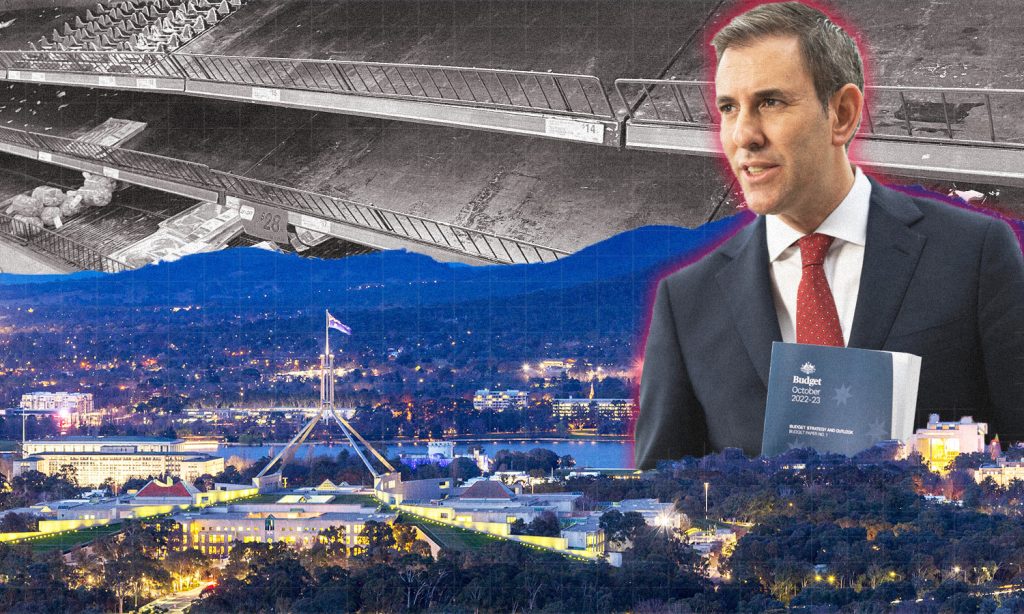Labor’s first federal budget has made tackling the cost of living crisis a centrepiece.
Treasurer Jim Chalmers forecasted that inflation would peak at 7.75% in the final quarter of the year and has framed his 2022-2023 economic plan as one that will not add to inflationary pressures as global recession looms.
“Australians know a complex combination of challenges at home and abroad is pushing up the cost of living,” Chalmers said.
“They don’t need us taking steps that would just make the problem worse – by putting even more pressure on prices and making the independent Reserve Bank’s job even harder. Instead, they need us to be responsible, reasonable and targeted – with policies that are affordable, fair and future-focused, delivering a long-term economic dividend”.
The three “primary objectives” of the budget that Labor has laid out are: “responsible cost of living relief, strengthening the economy, and beginning the hard yards of budget repair,” according to Chalmers.
He’s clearly playing this one with the expectation of successive years in government, saying that it will “lay the foundations of a stronger, more resilient economy” and that it will “do more than batten the hatches against global uncertainty.”
Here’s what he had to say on the cost of living.
A Five-Point Plan
In brief, the government highlighted five of its key policies that they hoped would address the cost of living crisis.
These are:
- Cheaper childcare
- The expansion of paid parental leave
- Cheaper medicines
- More affordable housing
- Stimulating wage growth
Let’s break those all down for you, shall we?
New Childcare Subsidies
Labor campaigned on making childcare cheaper for Aussies and now they’ve committed to doing just that. This is another policy that has been announced prior to the budget.
“Cheaper child care is a game-changing investment in families, our workforce, and our economy,” Chalmers said.
The new policy will cover 90% of the cost of childcare for families earning up to $80,000 a year.
For every $5000 earned above this, the coverage will drop by 1%, up to a combined income of $530,000.
The policy is set to take effect from July next year and will cost an estimated $5.1 billion. However, Labor has previously said that the policy will benefit 96% of working families and will help an estimated 37,000 full-time workers return to work after having a baby.
Paid Parental Leave Increase
Some of the big headlines pieces of the budget have already been announced and one of the biggest is the increase in paid parental leave.
“Tonight, our Labor Government delivers the biggest expansion to Paid Parental Leave since its creation,” Chalmers said.
Labor has said that they will increase paid parental leave in Australia by six weeks, taking it up to 26 weeks. The scheme however won’t be fully implemented by 2026, with an additional two weeks being added each year until then.
The policy is aimed at tackling the gender pay gap and the unpaid labour gap carried out by women in this country. The leave can be shared equally between partners and is paid at the minimum wage.
Cheaper Medicines Under the PBS
“This budget also makes medicines cheaper by slashing the PBS maximum general co-payment to $30 a script from the 1st of January next year,” Chalmers announced.
This would save up to $12.50 per script for about 3.6 million Australians every year, the government estimates.
At a cost of $787.1 million over four years, the maximum cost of general scripts covered under the Pharmaceutical Benefits Scheme will be cut from $42.50 to $30. This is the first time medicines have become cheaper on the PBS in the programme’s 75-year history.
More Affordable Housing
The housing shortage is one of the key reasons why property prices are so high and no one can afford to live anywhere. In an attempt to address that, Labor will increase the housing supply by a million homes, starting in 2024.
“Rents are through the roof, and many families are struggling to keep up,” Chalmers said.
“Supply hasn’t kept up with demand, which means too many struggle to live close to where they work. Too many are stuck on waiting lists for social housing. And for too many, the great Australian dream of home ownership seems completely out of reach. Our country can do better than that.”
The Federal Government has announced that they will create an additional 30,000 new affordable houses, with each state and territory expected to do the same. The plan is to have all of these built over five years, with a million extra in the market by 2029.
This is in addition to different 30,000 new social and affordable homes that the government has also committed to.
Lower deposits and smaller mortgages are also being offered for 40,000 eligible Australians.
While the plan sounds impressive, it’s not actually that out of line with historical growth in the housing supply. In the past five years, a little over 985,000 homes were built.
Getting Wages Moving Again
“If there’s one fact that sums up nearly a decade of wasted opportunities and warped priorities, it is this: real wages are lower today than they were 10 years ago,” Chalmers.
“It will take time to turn this around, but Australians now know this: deliberately keeping wages low is no longer federal government policy”.
This one is a little harder to see how its going to play out, as the government really only has the power to increase the minimum wage, which isn’t on the cards following the recent rise.
What the government has earmarked is $76.4 million for better workforce training programmes which are aimed at raising wages. $43.2 million will also go update workplace laws which are also aimed at doing the same thing.
Click here for our full coverage of what Labor’s budget means for mental health, climate change, and parenting.
Read more stories from The Latch and subscribe to our email newsletter.







